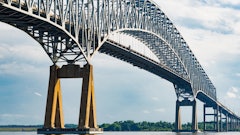
Supply chain experts agree that the massive, long-awaited Panama Canal expansion opening in late June, while interesting, is not likely to impact industrial activity in the short term. However, the often-forgotten U.S. inland ports have been quietly tearing up records for expansion and growing at nearly twice the national rate for industrial properties.
Inland ports have been the fastest growing markets for industrial demand, says Dwight Hotchkiss, national director of industrial for real estate services firm Colliers. About half of the 77 million square feet of industrial space absorbed in the second quarter was located in the inland port markets and the average asking rent for distribution facilities in these markets is at an all-time high of $5.66 per square foot, he says.
“The inland ports are not as sexy as the seaports and don’t get the same attention, but they’re also growing at a fast rate. Retailers need the inland ports to help satisfy the massive e-commerce demand today,” Hotchkiss notes.
An inland port is comprised of two main criteria, according to a recent CBRE study: direct connection to a major seaport via Class I rail, and major transportation infrastructure, in the form of rail (usually), interstate highway or inland waterway. Many markets considered inland ports also have access to large population centers within 300 miles, a strong industrial inventory, large labor pools and economic development policies such as free-trade zones and tax incentives.
To read the full story, please click here.




























